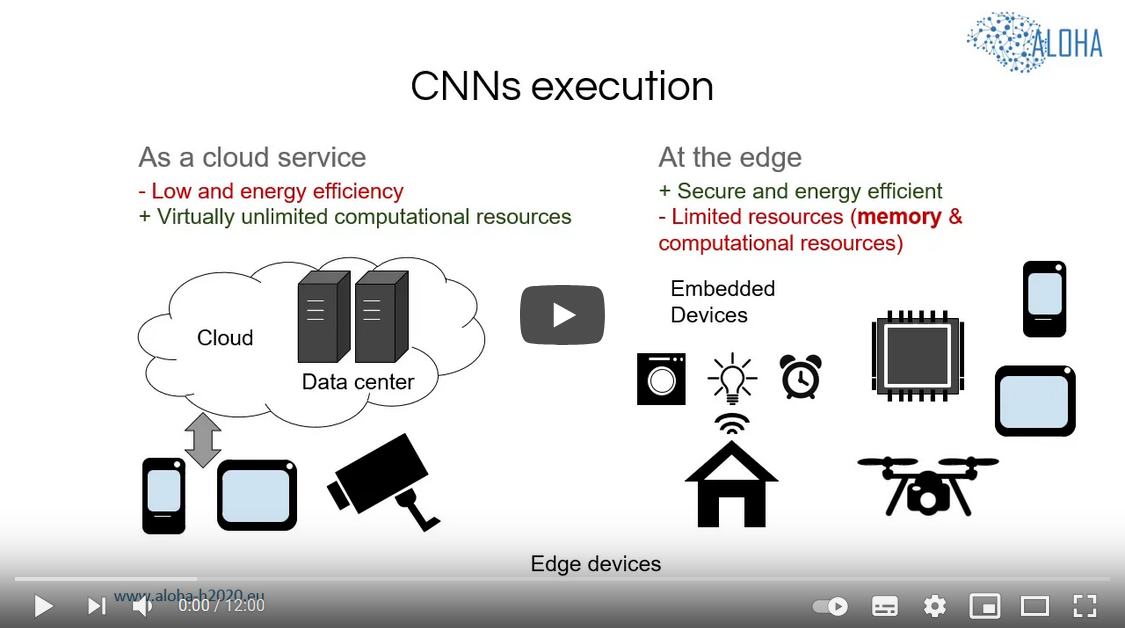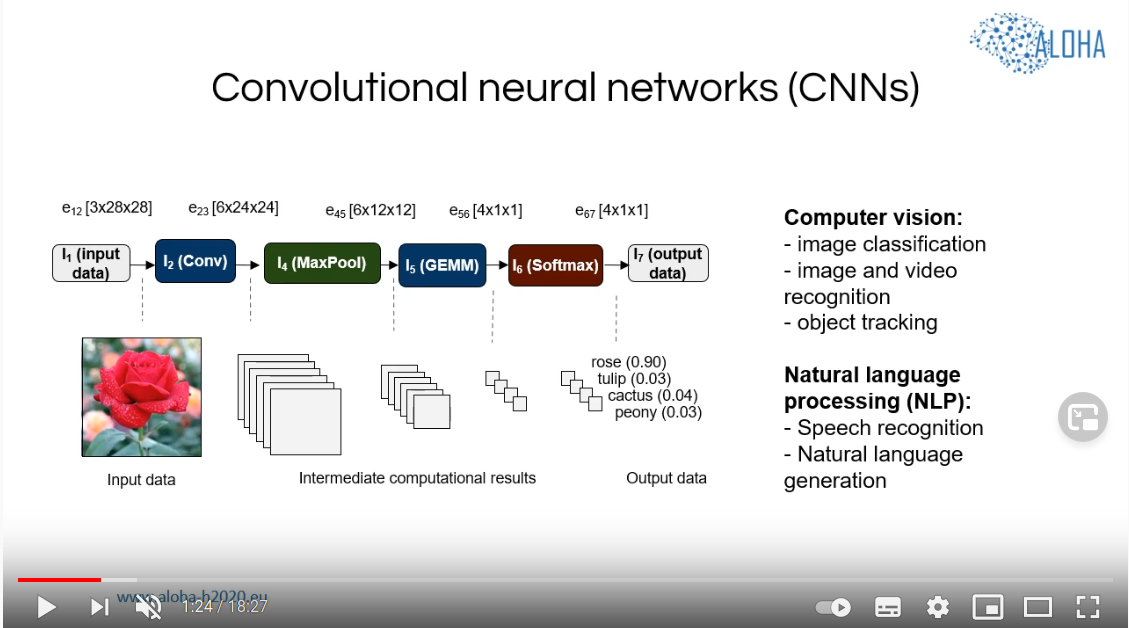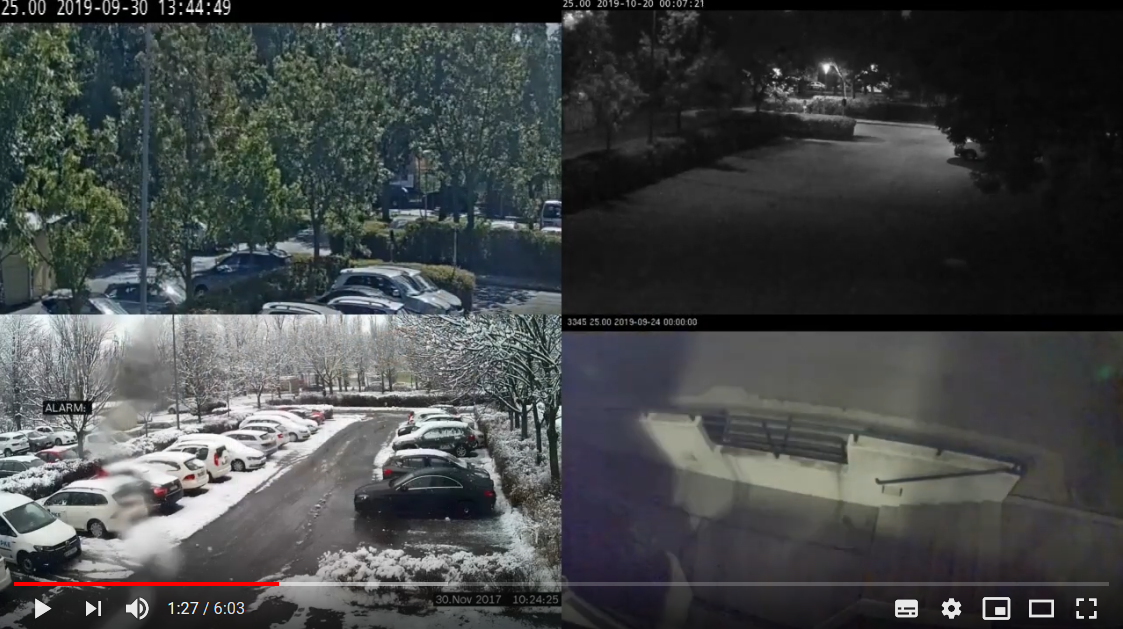- Details
- Category: Media

Convolutional Neural Networks (CNNs) are the core of many intelligent systems, including those that run on mobile and embedded devices. The execution of computationally demanding and memory-hungry CNNs on resource-limited mobile and embedded devices is quite challenging. One of the main problems,when running CNNs on such devices, is the limited amountof memory available...
In this video Svetlana Minakova and Todor Stefanov, from the Leiden Institute of Advanced Computer Science, present the paper entitled "Buffer Sizes Reduction for Memory-efficient CNN Inference on Mobile and Embedded Devices" which was accepted at the Euromicro Conference on Digital System Design 2020.
- Details
- Category: Media

Nowadays Convolutional Neural Networks (CNNs) are widely used to perform various tasks in areas such as computer vision or natural language processing. Some of the CNN applications require high-throughput execution of the CNN inference, on embedded devices...
In this video Svetlana Minakova, Erqian Tang and Todor Stefanov, from the Leiden Institute of Advanced Computer Science, present the paper entitled "Combining task- and data-level parallelism for high-throughput CNN inference on embedded CPUs-GPUs MPSoCs" which was accepted at the SAMOS XX International Conference on Embedded Computer Systems: Architectures, Modeling and Simulation.
- Details
- Category: Media

This video presents the video surveillance of critical infrastructures use case within the ALOHA H2020 project.
We define critical infrastructure as being assets, systems and networks that, due to their nature, are essential for the proper functioning of a government, an economy or a society in general. Common examples of critical infrastructures are Correctional Facilities, Central Banks, Transportation Systems, Public Health Facilities, Energy and Water supply chains.
PKE, responsible for this use case whithin the ALOHA project, is working on Deep Learning based technologies to develop and improve intelligent video-based intrusion detection systems to secure such infrastructures.
Video by PKE.
- Details
- Category: Media

The ALOHA project has been proudly mentioned among the "100 Italian Robotics and Automation stories" in a research report carried out by Fondazione Symbola and Enel Group. The document is available in English and Italian.
The 100 Innovation Stories Report, promoted in cooperation with UCIMU Foundation, is now in its fourth edition, after having studied innovation in the renewable energy, circular economy and e-mobility supply chains, delves into robotics and automation, another sector of national excellence, deeply rooted in our country.
Read more and download the report...
- Details
- Category: Media

In this video, speech recognition is used to control a robotic arm (e.Do by Comau) keeping hands free. Two modalities are available: predefined poses or spatial mode using x, y and z coordinates. The deep neural network model is speaker independent and classifies audio into ten keywords.
Video by Santer Reply.
- Details
- Category: Media

The video presents the initial version of the smart industry demonstrator, where Deep Learning is used for speech recognition. Santer Reply, responsible for this this use case, realized, using the ALOHA toolflow, an embedded keyword spotting system to control a robot without relying on a cloud backend.
Video by Cristina Chesta, Santer Reply.
- Details
- Category: Media

In our previous blog entry "ALOHA in the press (January 2018)" we collected a list of articles and blog posts related to the ALOHA's kick off meeting.
In this new post we share our media coverage during the last months of project (February-June).
This list includes articles in German, Italian, English, French, Chinese.
- Details
- Category: Media
Today at the Built to Change Summit in Santa Clara, California, CA announced that our Strategic Research team will collaborate on three projects funded by the European Union (EU) Horizon 2020 program. These projects will advance smart IoT systems and speed regulatory compliance through Artificial Intelligence (AI) and innovative development. Our ALOHA (adaptive and secure deep learning on heterogeneous architectures) project has huge implications for “ethical AI” and creating software that is more transparent and “bias-resistant.”
Originally written by Otto Berkes, Chief Technology Officer at CA Technologies for the CA official Blog.
A related booklet, with more details about the project, is downloadable from this article.
- Details
- Category: Media

The ALOHA project has been mentioned in the Italian "University guide 2018" published by the Italian national newspaper "Il sole 24 ore". The University guide is a 52 pages manual that presents the Italian university offer for the year 2018-2019.

